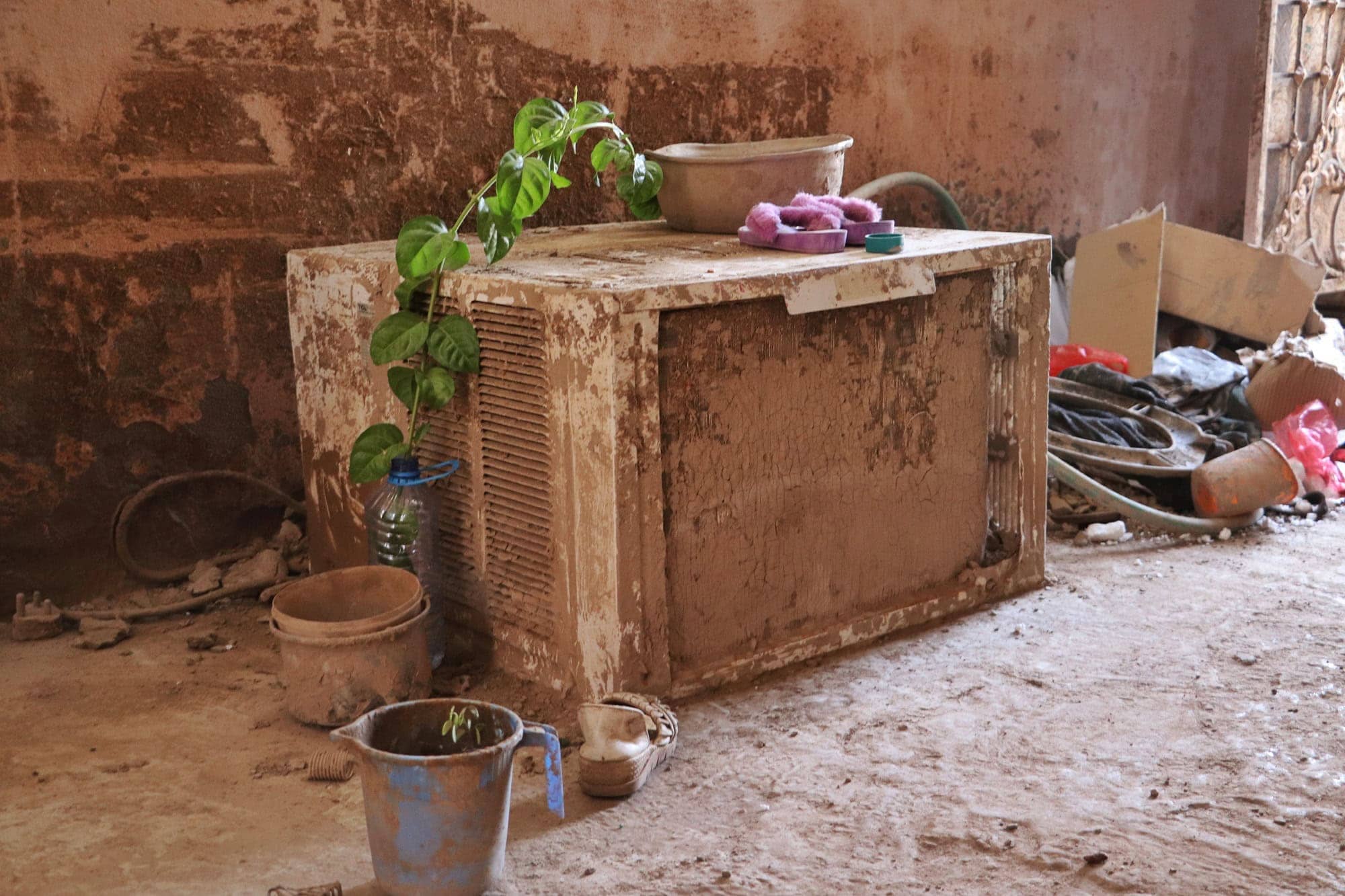
The home of citizen Tayseer Mohammed. Her belongings lie scattered, covered in mud, in the aftermath of the Al-Haswa floods in Aden. Photo September 21, 2025 (South24 Center)
Last updated on: 15-10-2025 at 5 PM Aden Time

|
|
“We lost almost everything—from important documents to clothing. Even my children no longer have anything to wear.”
Reem Al-Fadhli (South24 Center)
On the evening of August 23, 2025, the Al-Haswa area in Al-Buraiqa District, Aden, experienced one of the most intense flood waves in recent years. Torrents of water surged through residential neighborhoods, workshops, and farmlands, causing extensive human and material losses and submerging vast areas of housing.
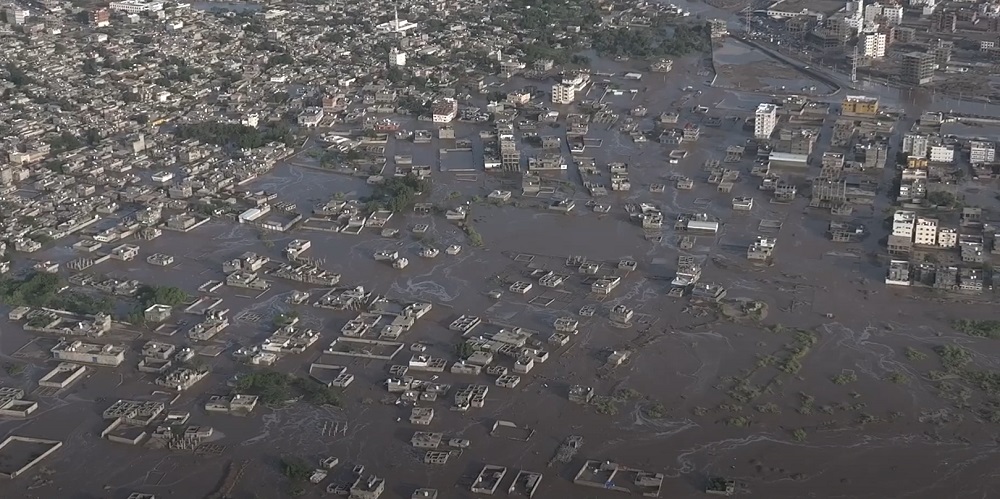
Aerial shot excerpted from a video by Aden Independent Channel showing the Al-Haswa flood disaster in Aden, August 23, 2025 (cropped by South24 Center)
The flooding was not solely the consequence of exceptional rainfall, but rather a manifestation of long-standing infrastructural failures, unchecked urban sprawl, inadequate flood drainage, and a lack of preparedness to confront such situations.
The disaster impacted hundreds of families, destroyed homes and properties, and disrupted essential services such as water and sanitation. Though more than six weeks have elapsed, many residents continue to struggle to resume normal life, with the humanitarian and on-the-ground repercussions of the disaster remaining evident to this day. Efforts by the authorities and humanitarian organizations to help post the floods were limited.
Among the hundreds of families overwhelmed by the floodwaters, this report documents the stories of several affected individuals, illustrating the scale of damage, the local responses, and the underlying factors that transformed the Al-Haswa flood from a natural phenomenon into a protracted humanitarian crisis.
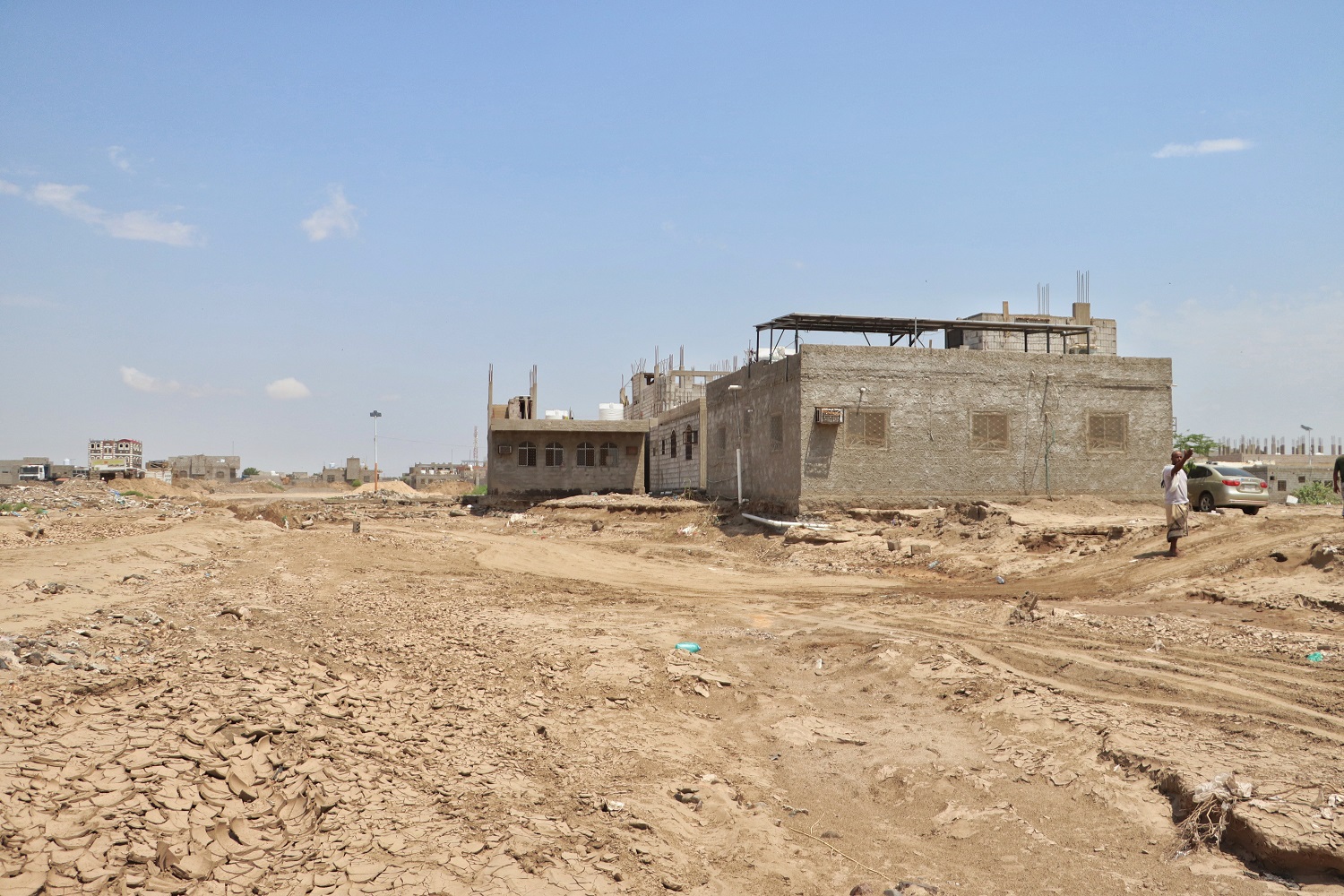
A thick layer of mud cakes the surroundings in the aftermath of the Al-Haswa floods in Aden, nearly one month later. Photo September 21, 2025 (South24 Center)
Testimonies from the Heart of the Disaster
As floodwaters engulfed the low-lying neighborhoods of Al-Haswa, many residents found themselves facing an unfamiliar and terrifying reality. Saleh Mohammed Al-Haij, an electrician from the Fishermen’s Unit, said the flood swept away everything he owned, including his workshop—his sole source of income.
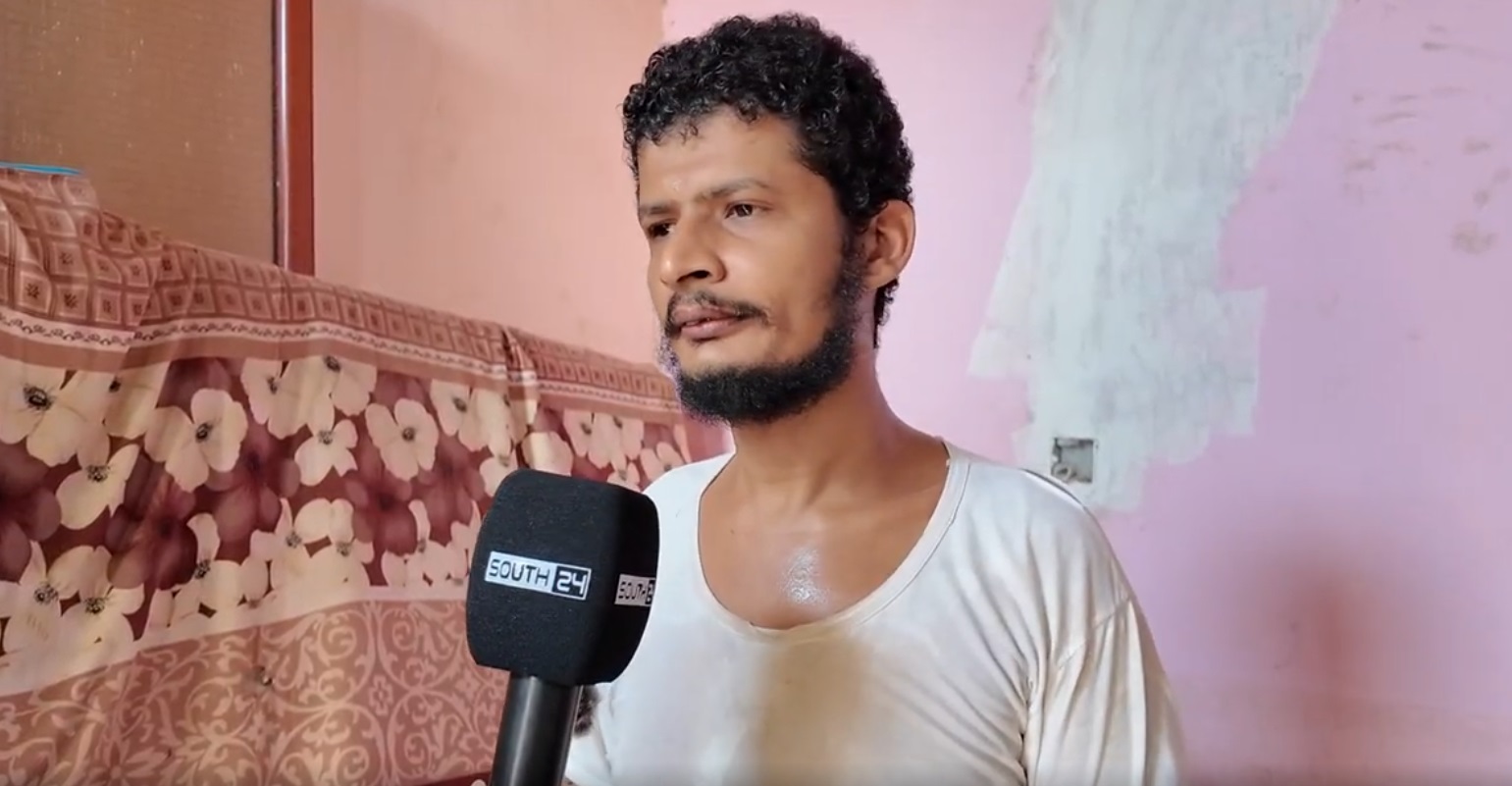
Citizen Saleh Mohammed Al-Haij – Coping with his uprooted existence, nearly one month after the Al-Haswa floods in Aden, September 21, 2025 (South24 Center)
“I lost everything. My workshop, where I worked as an electrician, was completely submerged, leaving me unable to continue my work,” Saleh told South24 with sorrow, adding that the disaster forced him to relocate with his family, as he couldn’t bear the thought of returning to the vestiges of what had once been his home.
From inside her damaged home, a housewife Haifa Fareed recounted to South24 those harrowing moments: “We were shocked by the sudden deluge that invaded our home, causing fear and panic, especially since we had never expected it to happen on such a scale... The kitchen was completely destroyed, and the floors and tiles were badly damaged due to the unprecedented rise in water levels.”
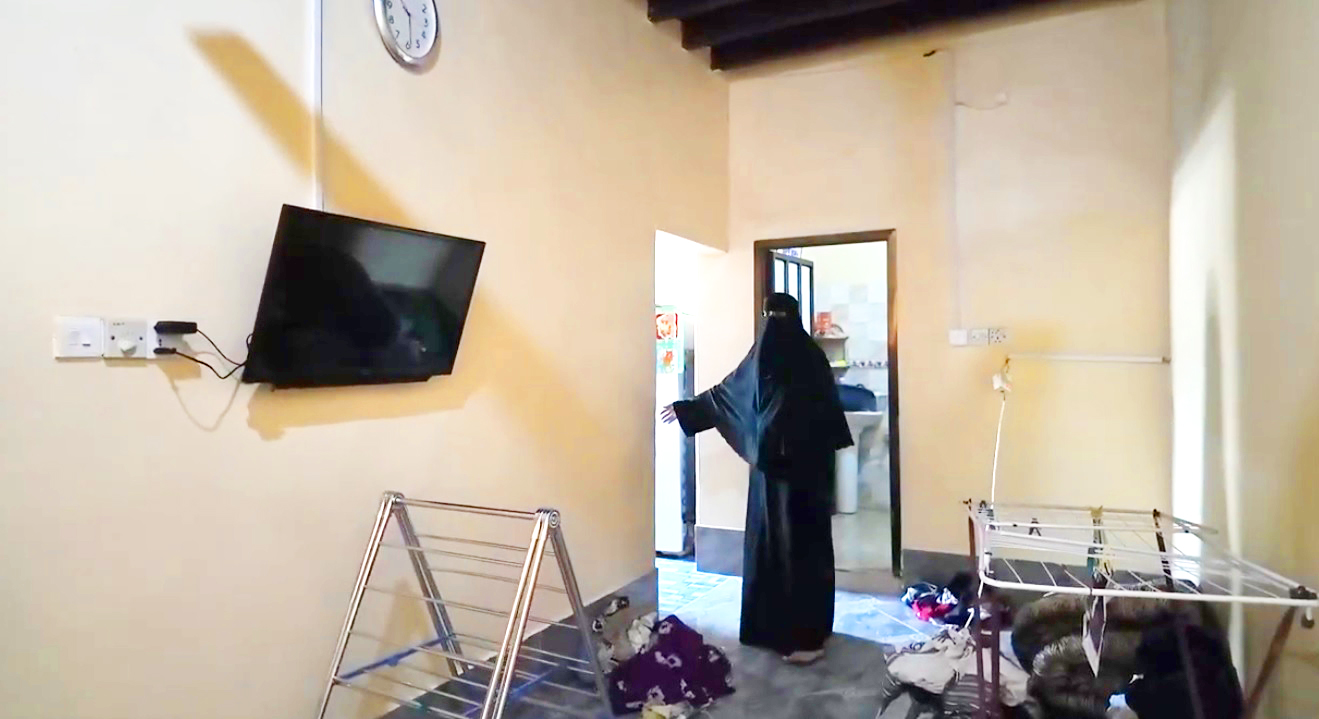
Citizen Haifa Fareed – Most of her household possessions were destroyed in the Al-Haswa floods that inundated her home, in Aden. Photo taken nearly a month later. September 21, 2025 (South24 Center)
Recalling the nightmare, Tayseer Mohammed said her immediate thoughts were for the safety of her children as the water surged into their house: “My first thought was for the safety of my children and husband. I just wanted to get my three children out safely. Thankfully, we survived, but when we returned a week later, everything was destroyed.”
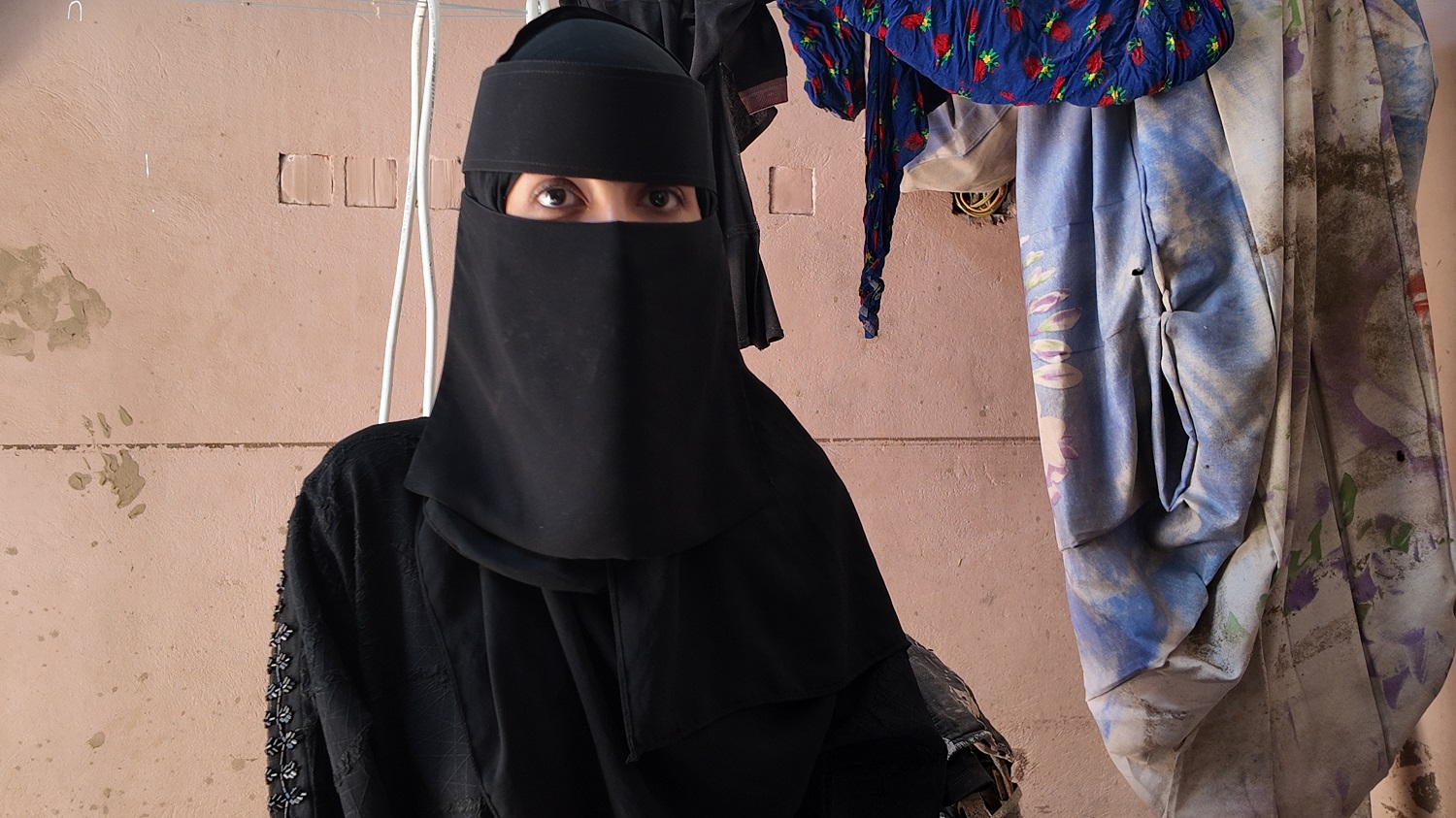
Citizen Tayseer Muhammad - Effects of the Haswa floods in Aden, September 21, 2025 (South24 Center)
Ibrahim Mohammed Abdullah, a fisherman from Al-Haswa, lost his newly-built home and all his work tools collected over thirteen years of effort. He told South24:
“The flood didn’t just steal my belongings—it stole my dreams. I was preparing to get married in December, but I had to cancel the wedding after losing everything.”
Elsewhere in the neighborhood, Ghusoon Qaed, a widow supporting seven children, two of whom have disabilities, shared her harrowing experience with South24: “We were living safely in our home, when the floods swept everything away. We tried to escape but were unable to leave the house at first. Then we fled to a school where we stayed for about twenty days without any resources.”
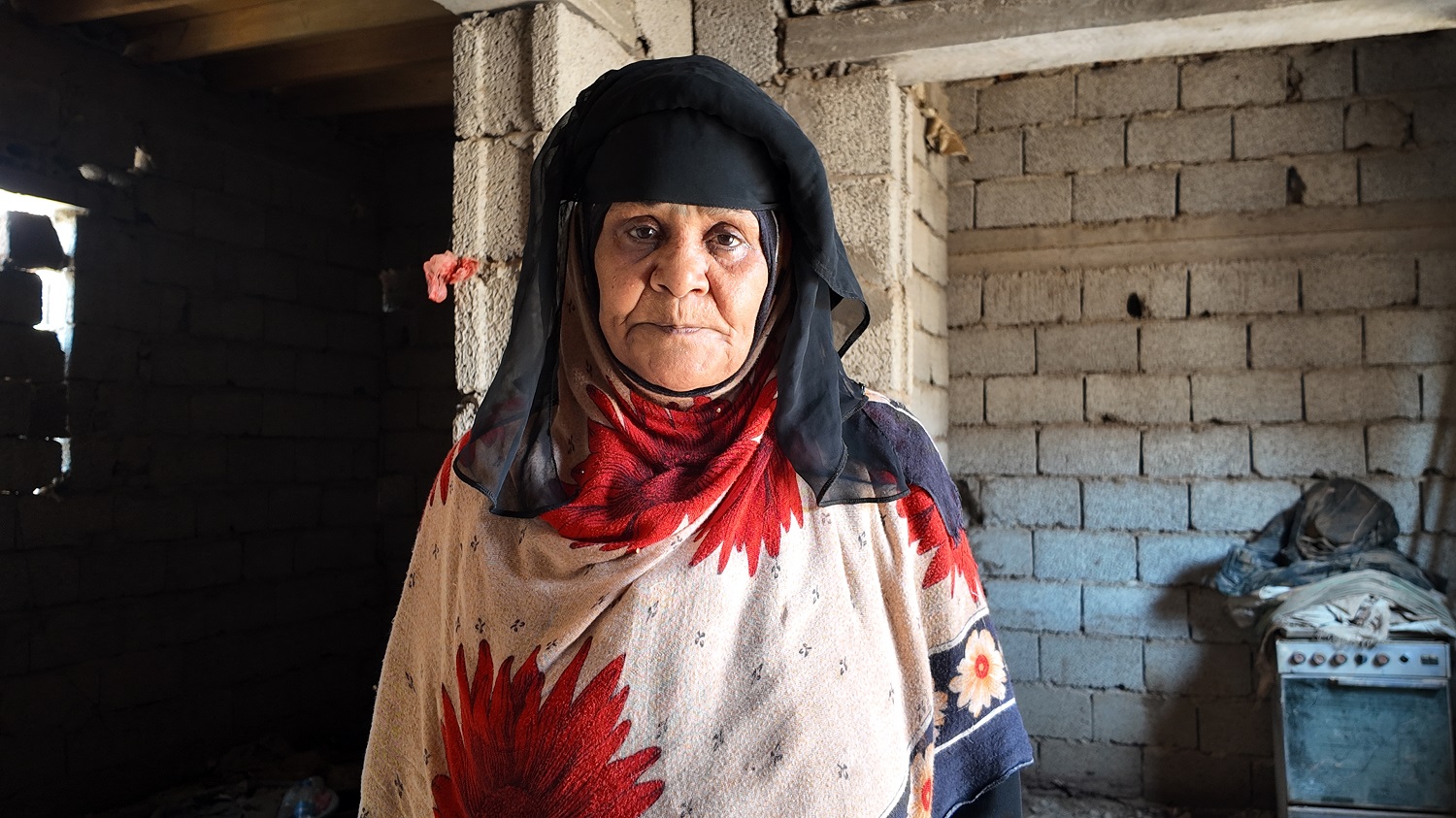
Citizen Ghusoon Qaed – She is overcome with exhaustion trying to cope with the tough conditions after the Haswa floods snatched everything in their house in Aden. Photo taken September 21, 2025 (South24 Center)"
She added: “I’m a widow living on my late husband’s pension, supporting seven children including two with disabilities. I have no other source of income. We live in extremely harsh conditions and have nothing. I hope mercy reaches us—we are exhausted.”
The head of the community committees in the Fishermen’s Unit, Awad Abdulrab Hanishi, told South24 that the extent of flood damage was primarily due to the lack of oversight and urban planning.
“The main cause of this disaster is due to the accumulated sediment in the flood channels, in addition to the unregulated urban construction that blocked the natural outlets leading to the sea, which exacerbated the damage.”
The Scene After Over a Month
More than six weeks after the floods swept through Al-Haswa, the disaster’s effects remain visible on the ground. Partially collapsed homes have yet to be repaired, roads that overflowed with water and mud still bear signs of disruption, and many families continue to suffer, having received only limited aid that fails to meet even their basic needs.
During a field visit conducted by a South24 team to the area, residents expressed their ongoing hardship and the lack of tangible support from government entities or humanitarian organizations.
Saleh Mohammed Al-Haij said he has yet to receive any assistance despite his significant losses: “We lived in a relative’s house for a full month. I couldn’t return home—the idea of going back to a devastated house was deeply discouraging for me and my family.”
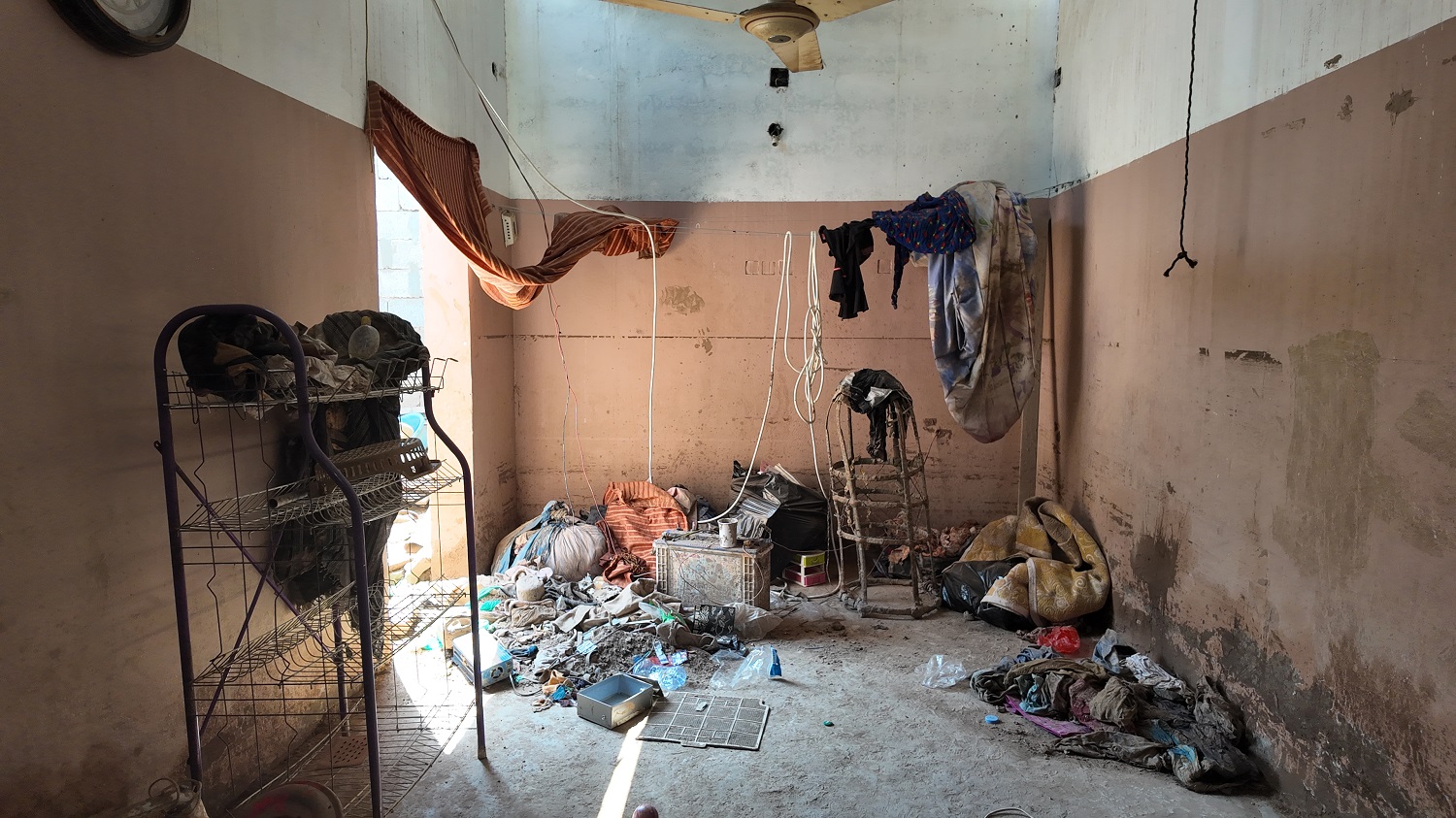
The flood-ravaged home of citizen Saleh Mohammed Al-Haij. Once a bustling, happy place, the Haswa flood waters swept away everything in its wake. (Photo September 21, 2025 (South24 Center)
Tayseer Mohammed echoed the same sentiment, explaining that the damage to Al-Haswa families was overwhelming:" We lost almost everything—from important documents to clothing. Even my children no longer have anything to wear.”
Ghusoon Qaed stated that what remains of her home is uninhabitable, having lost most of her household appliances and belongings.
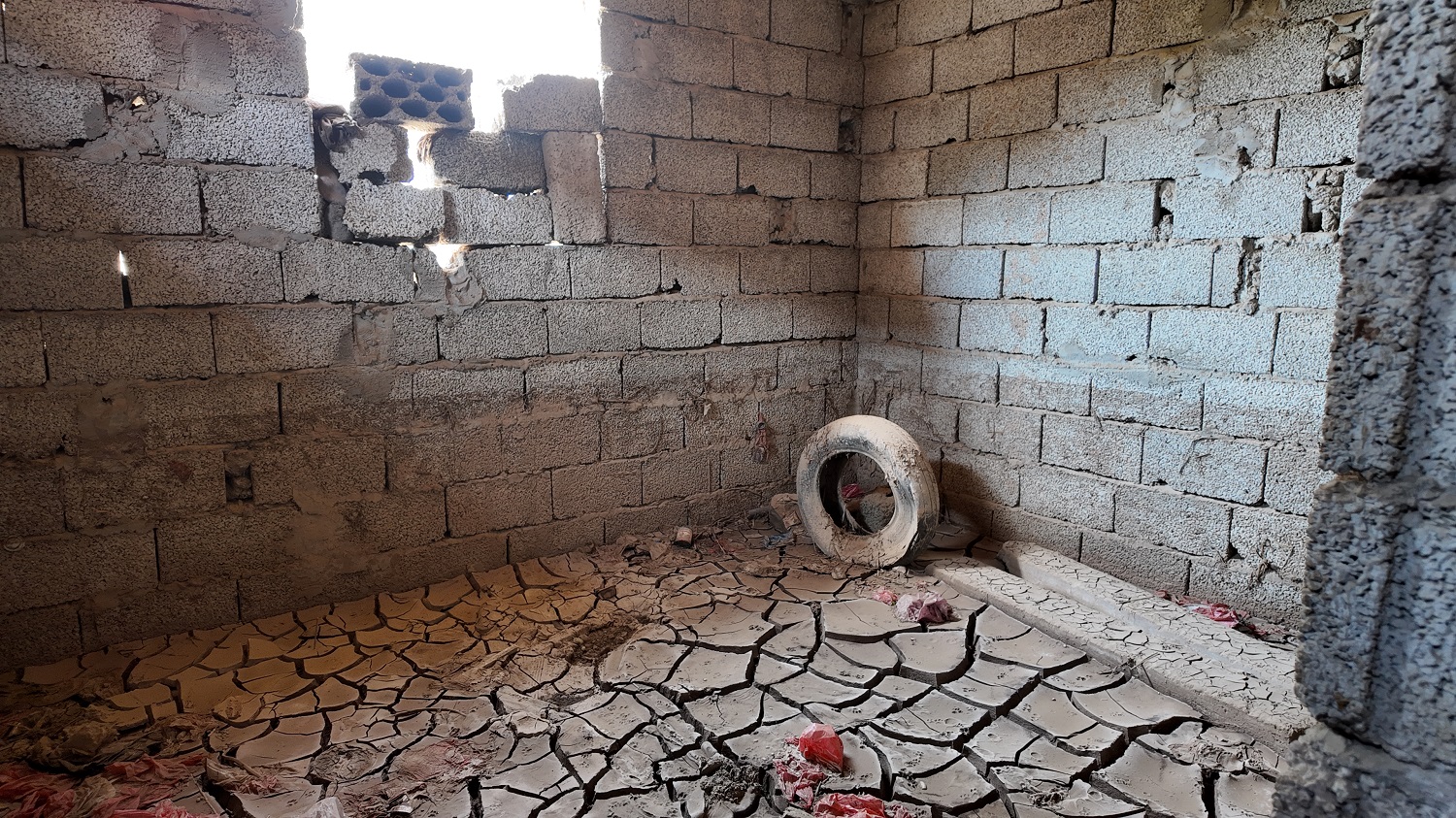
The bare walls and mud-caked floor of citizen Ghusoon Qaed’s home tell of the ravages of the Haswa flood. Picture taken one month later shows how uninhabitable the house is. (September 21, 2025 (South24 Center)
Locals say that nearly all the surrounding farms were devastated in the floods, and countless livestock perished. The floodwaters also contaminated the drinking water networks and led to collapse of the sewage system.
Official data obtained exclusively by South24 from the local authority office in Al-Buraiqa District shows that the flood resulted in at least one confirmed death, while 12 individuals swept away by the water were rescued.
Documents report damage to more than 30 homes either fully or partially, and over 2,000 homes to varying degrees. Al-Haswa recorded 621 affected families, representing the highest percentage in Aden Governorate—82.3% of all those affected by flood in the governorate. Housing damage accounted for 61.96%, followed by asset losses at 37.4%.
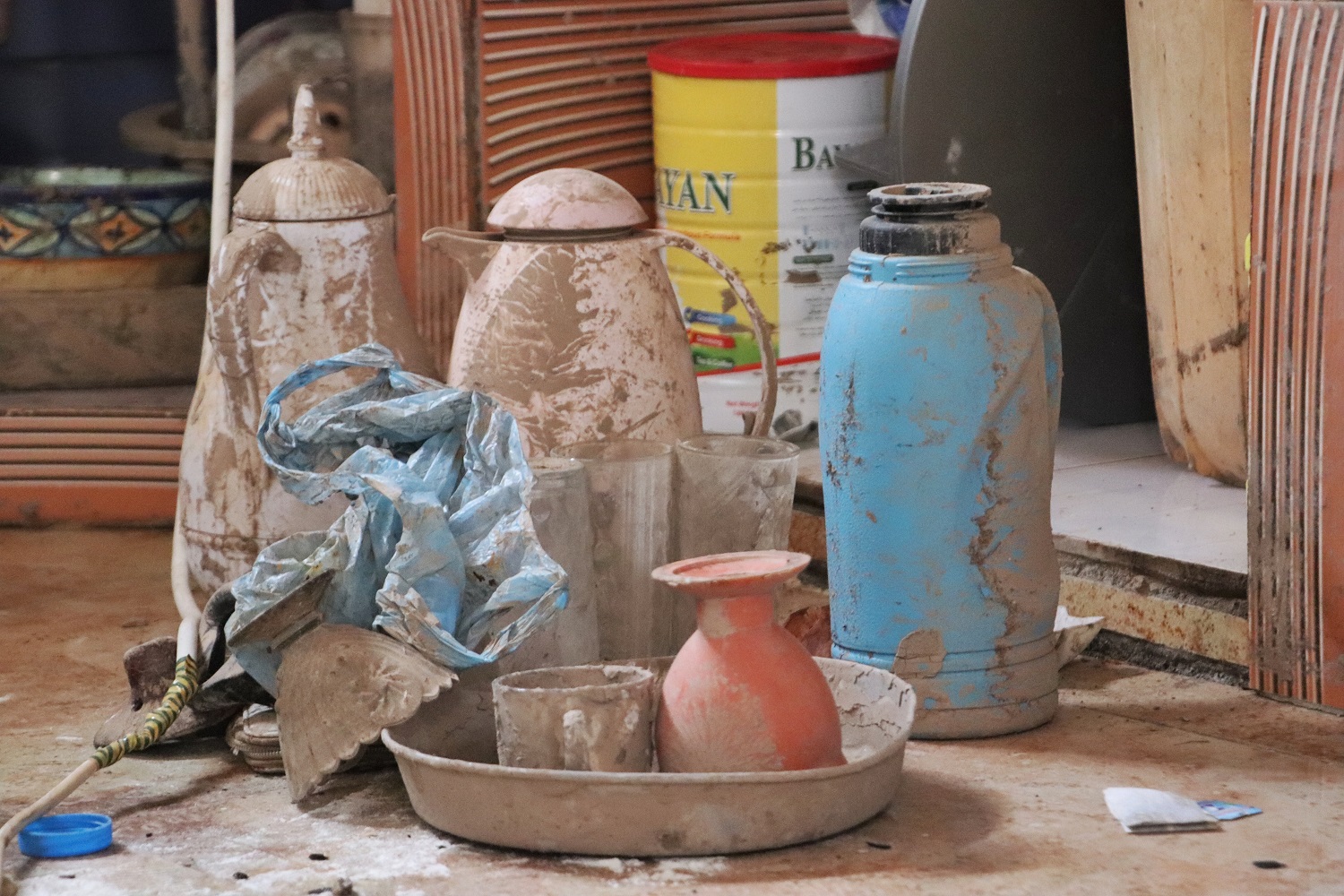
Mud-caked jugs salvaged from under the piles of silt that accompanied the floodwaters that ravaged the once-pretty home of citizen Tayseer Mohammed –Picture taken on September 21, 2025 (South24 Center)
Local Authorities and Government Response
Testimonies from local residents reveal that what happened in Al-Haswa was not merely a natural disaster, but the direct result of accumulated human and administrative factors. The flood channel of the Great Valley, which empties into the Gulf of Aden, has over the years become clogged with solid waste and unregulated construction, obstructing the natural outlets for water drainage toward the sea.
When heavy rains fell on August 23, the floodwaters found no open path to flow out, and burst into residential neighborhoods, carrying along tons of mud, debris, and destruction.
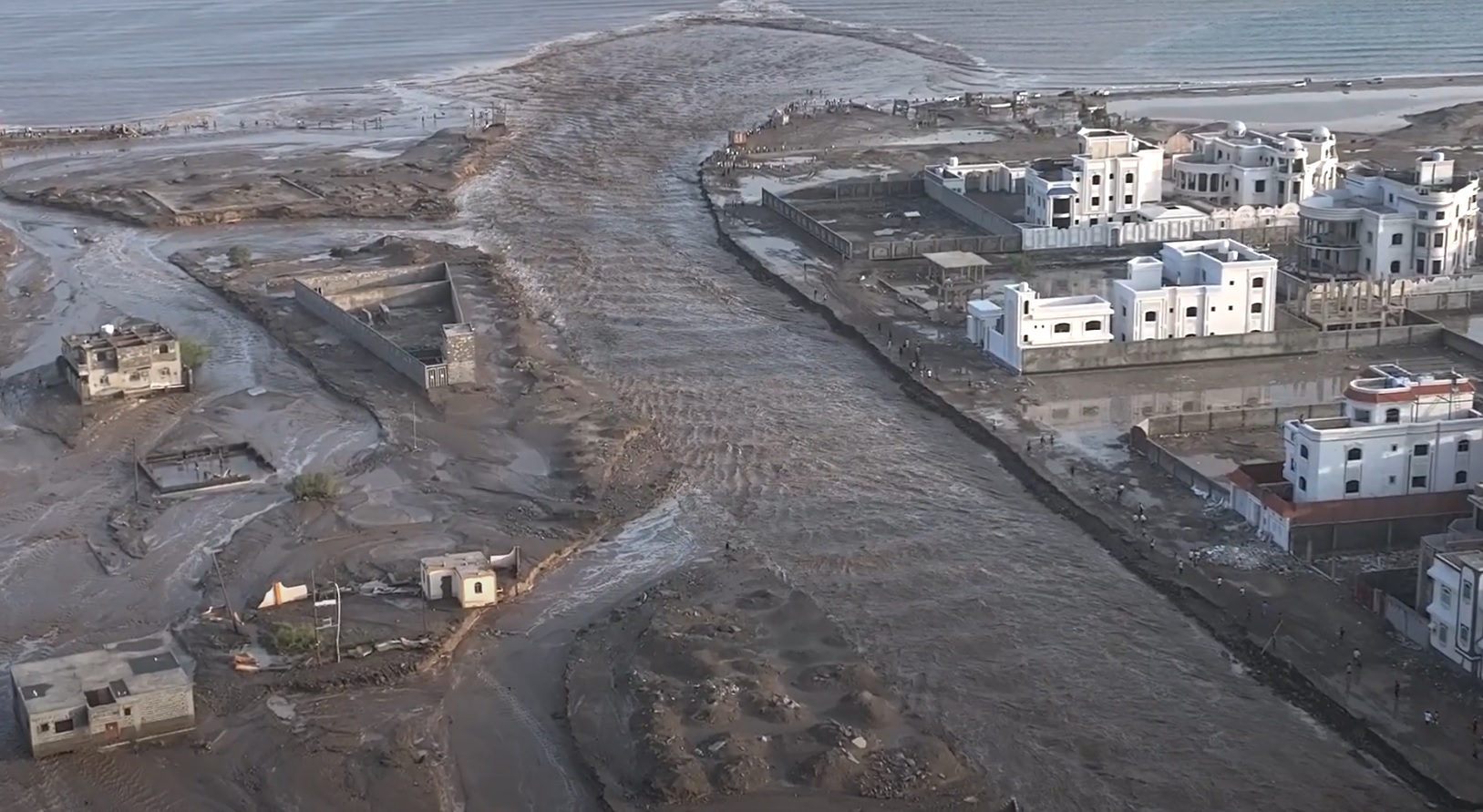
Aerial shot excerpted from a video by Aden Independent Channel documenting the Haswa flood disaster in Aden, August 23, 2025 (excerpt by South24 Center)
The local authority in Al-Buraiqa District made efforts to secure support from the governorate’s leadership and the central government to respond to the disaster. However, the extent of this support remains unclear. According to official documents reviewed by South24, the district authority submitted a comprehensive plan to address the Al-Haswa disaster, consisting of three phases:
1. Emergency response and rescue (2 to 5 weeks)
2. Early recovery and rehabilitation (12 to 20 weeks)
3. Reconstruction and long-term resilience enhancement (3 months and beyond)
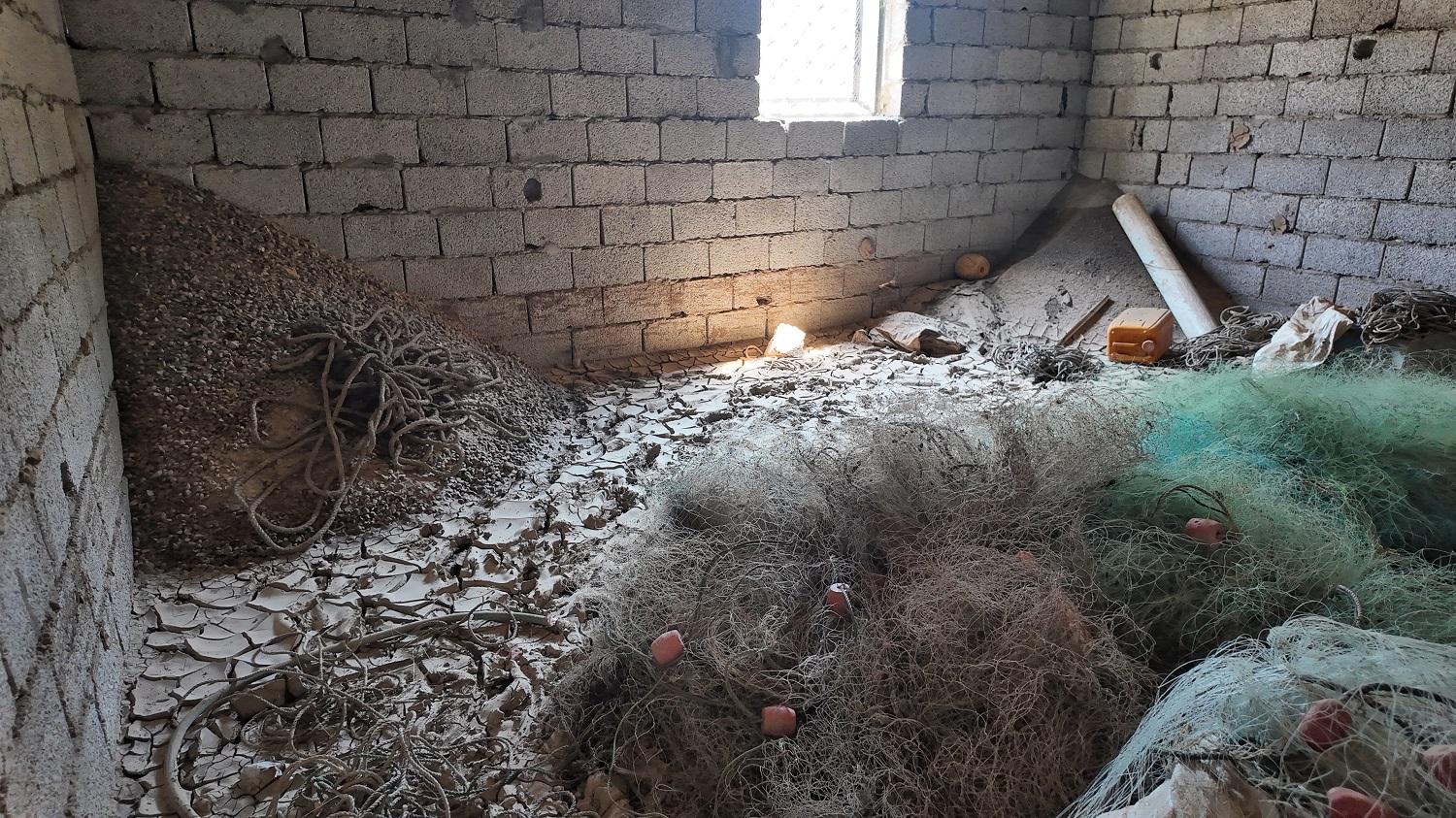
His fishing nets lie in a tangled mess amid the mud-caked house. The floods ruined his home and dreams of a happy life ahead. Fisherman Ibrahim Mohammed’s house in the aftermath of the Haswa floods in Aden, one month later. Photo September 21, 2025 (South24 Center)
The plan focuses on coordinating efforts to alleviate humanitarian suffering, restore services, develop infrastructure, and establish an early warning system. It also recommends building a new hospital in the district and allocating emergency funding to rehabilitate infrastructure, including diverting 10% of Aden’s central allocation to support Al-Buraiqa, which constitutes 67% of the governorate’s area.
Notwithstanding the lack of government support at the required scale, citizens recalled to South24 the courageous initiative of Al-Buraiqa District Director Salah Al-Shoubaji during the disaster, when he drove through rushing floodwaters to rescue a family, narrowly escaping death after his vehicle was swept away before being saved from drowning.
Following the disaster, Security Belt Forces mobilized to secure the flood channels and key intersections submerged by water, in an effort to mitigate the damage and prevent further collapse of the road network.
Aden Governor Ahmed Lamlas conducted an inspection visit to the area just hours after the disaster, to assess the extent of damage to homes and infrastructure.
As part of the post-disaster measures, Prime Minister Salem Bin Braik, during a government meeting held on August 25 in Aden, directed the launch of a water corridor project in the Great Valley—13 kilometers long and 300 meters wide—stretching from Al-Wahat in the north to the Al-Haswa estuary in the south, to drain rainwater and floods and protect neighborhoods and farmlands.
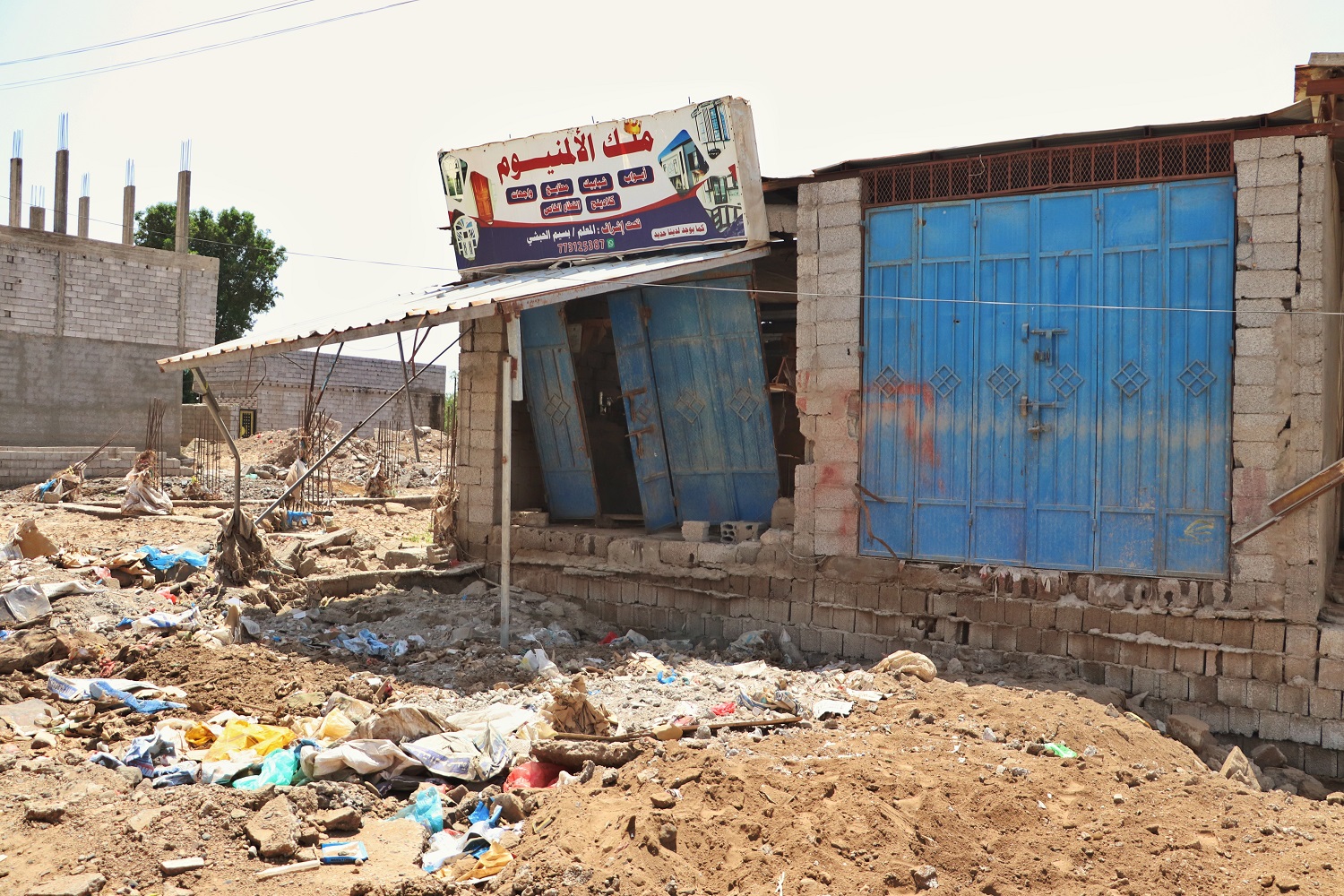
Aftermath of the Haswa floods in Aden, September 21, 2025 (South24 Center)
Bin Braik emphasized the need to halt encroachments and unregulated construction along the flood channels and cancel illegal permits, stressing that such practices were the main cause of the disaster’s severity. He also ordered the establishment of a national emergency center to coordinate disaster and climate change response efforts and directed relevant authorities to prepare detailed damage reports to secure
funding for repairs.
Later, Governor Lamlas affirmed at a technical meeting that the Great Valley file is a “top priority” for the local authority, and emphasized on coordination with the Ministry of Public Works to prepare a comprehensive engineering study offering sustainable solutions to prevent recurrence of such a disaster.
However, these initial moves have yet to be followed by effective and sustainable humanitarian relief, according to testimonies gathered by South24. Residents say the relief response has not matched the scale of the disaster, with aid limited to small food baskets delivered to a few displaced families, while the majority remain in their damaged homes without basic shelter or assistance.
Awad Abdulrab Hanishi, head of the community committees in the Fishermen’s Unit, said the local authority’s efforts were “appreciated but insufficient given the magnitude of the tragedy.”
He added: “We thank the local authority for the efforts made in Al-Buraiqa, as well as some organizations that conducted damage assessments, but we affirm that these interventions are not enough in view of the scale of the disaster. People are still living in dire conditions without any real compensation.”
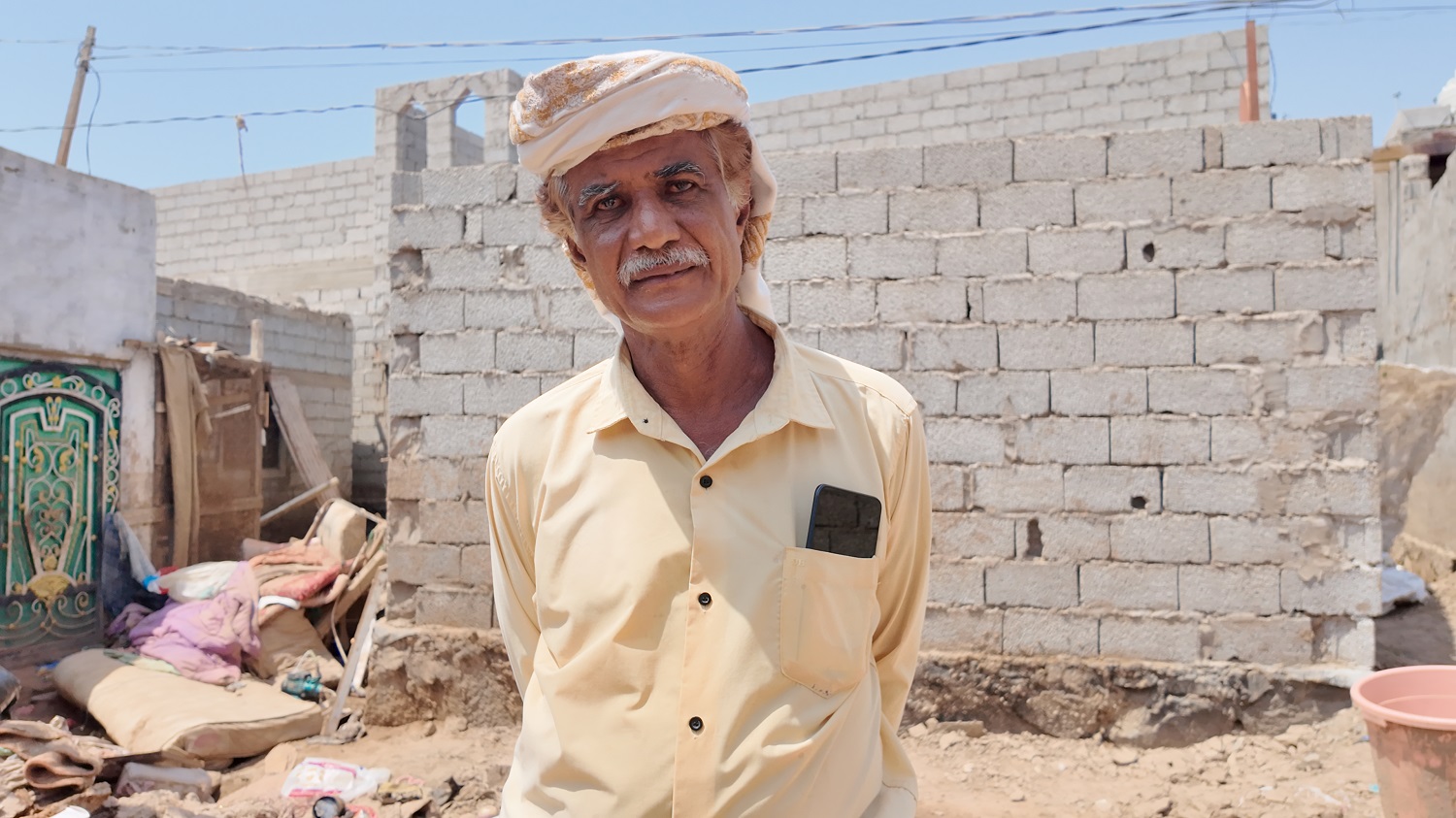
Community leader Awad Abdulrab Hanishi, standing amid the ruins left behind by the floods. Photo September 21, 2025 (South24 Center)
Hanishi stressed that the solution lies not only in providing compensation, but also in addressing the root causes of the disaster -- by clearing debris from the flood channels, curbing unregulated construction, and activating the role of relevant authorities for on-field inspections.
The Social Affairs Authority of the Southern Transitional Council had reached out to humanitarian and relief organizations in Aden, as well as the private sector, to provide assistance to those affected by the disaster. Some of these entities responded by carrying out limited damage mitigation activities and providing temporary shelter for a number of families.
Meanwhile, residents of Al-Haswa continue to struggle to reclaim what remains of their lives more than six weeks after the disaster. The flood’s impact is still visible in every corner of the area: collapsed homes, cracked streets, and water channels that remain uncleared. Amid these conditions, residents continue to appeal to the local authorities, the government, and humanitarian organizations to speed up compensation efforts and help them overcome this ordeal.